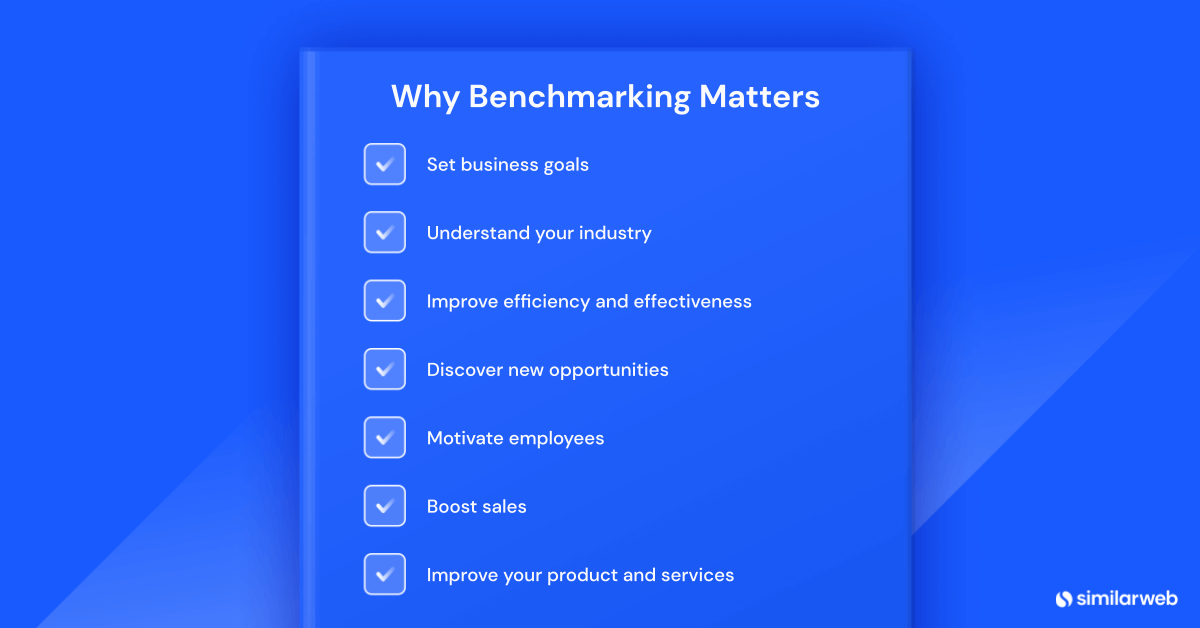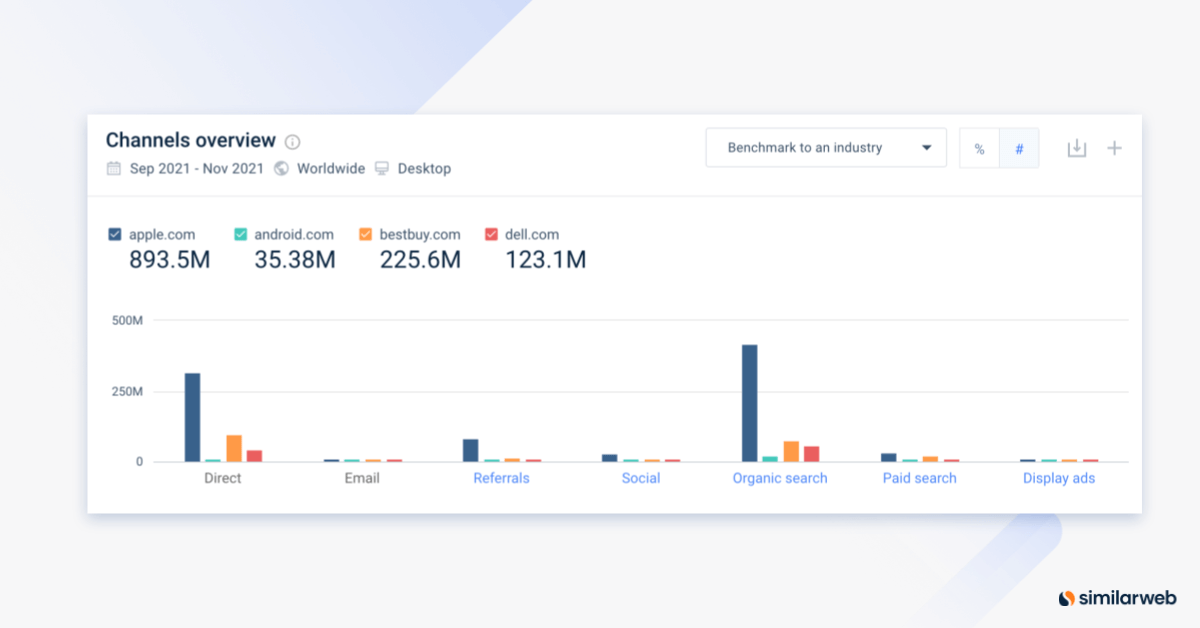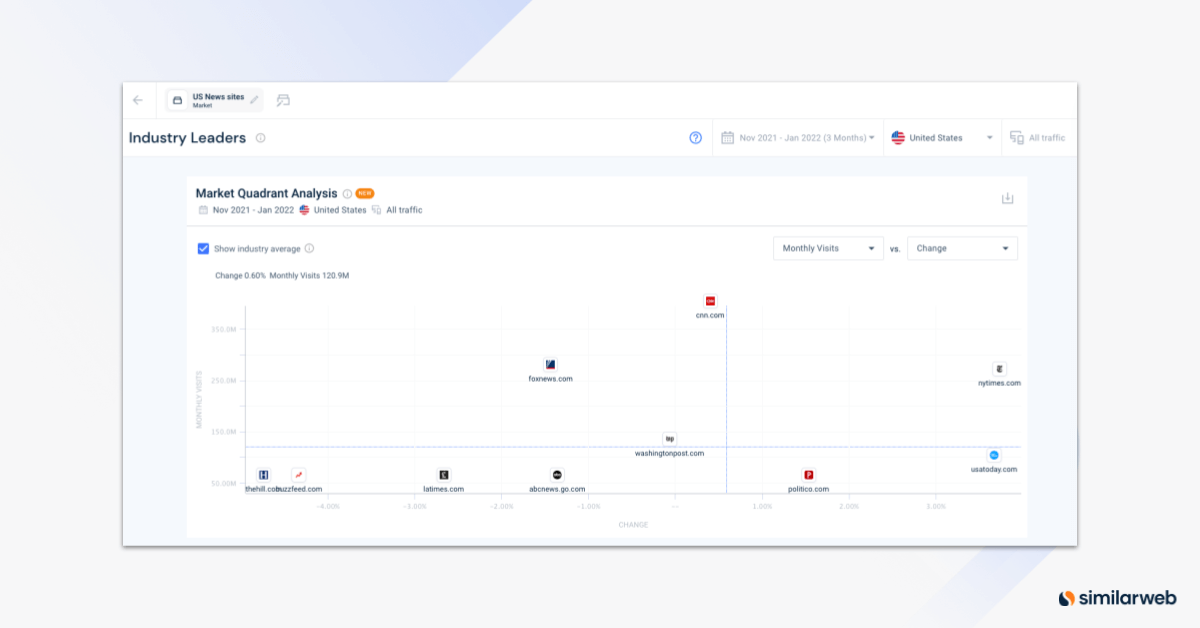Why Do Benchmarking in Business?

How do you know if you’re doing a good job?
Let’s say you’re a runner training for a 5K. The first time you run the distance, it takes you an hour. The next time you do it, it takes 45 minutes. You must be doing great, right? With such a huge improvement, you think you’re ready to win a big race! Not so fast…(pun intended!)
You may think you’re a fast runner, but what does fast mean without comparing your results to someone else’s? If you’re training to win a 5K, it would be helpful to know how fast the other runners will be. You might be disappointed to learn that 45 minutes – while a significant improvement from your previous trial – will barely put you in the top 50% of runners. In fact, if you want to win, you need to be doing it in about 15 minutes!
This is benchmarking. The term has become a buzzword recently, so while everyone is throwing it around, let’s get down to the nitty-gritty. What exactly does it mean and why is it so important?
Why do business benchmarking?
Benchmarking in business tells you how successful your efforts are. It’s an important tool for continuously improving performance and staying ahead of competitors.
If you’re still wondering why business benchmarking is so important, keep reading for the top seven ways it sets you up for success.
1. Set business goals
Imperative for every business initiative, goals give you something to work toward and know whether your activities have been successful. However, goals must be realistic in order for them to be useful for your organization. How do you know if a goal is realistic? (You can have one guess) By benchmarking!
Benchmarking in business can help you define what’s possible and what’s considered a success. Let’s say you want to set a business goal for generating qualified leads from your website. Is 100 leads a month a good goal?
To answer this question, create an internal benchmark based on the number of leads generated in previous months and the month-over-month growth rate. You’ll then create a second benchmark based on how many leads your competition might be generating from their websites. These company benchmarks will help you determine a reasonable goal for how many leads you can generate in a month.
2. Understand your industry and competition
While every business strives to be unique, let’s face it, being too unique is risky. In every industry, customers have certain expectations and companies tend to have similarities. It’s important to do your market research to understand these expectations and similarities because they exist for a reason. Competitive benchmarking helps you understand what is expected and what is the norm in your industry.
Let’s say you decide to benchmark customer service among your competitors. Your research reveals that all competitors have 24/7 phone support. This could be because customers expect around-the-clock support and avoid companies that don’t offer it. This is important information for you when you develop your own customer service strategy. Make sure you’re providing customers what they expect and that your offerings aren’t lagging behind your competitors.
3. Improve efficiency and effectiveness
No matter how great your business is, it can always be better. You can always generate more sales, lower your marketing costs, or improve your processes. But you’ll never know how to do these things without performance benchmarks. You probably already track several metrics in your business – maybe you look at your click-through rate or other website metrics. Anything you track is a benchmark and can be used as a starting point for improvement.
If you see that any of your metrics are stalled month-to-month, or any seem to get worse, you know that it’s time to make some changes. For example, let’s say you notice your website’s bounce rate increasing. This benchmark notifies you that it’s time to figure out why people are leaving your website and what you can do to make them stay.
4. Discover new opportunities
Ever felt stuck? Sometimes you try several different things to improve sales or any other metrics we discussed earlier and nothing works. You’re not sure what else you can do.
Instead of brainstorming for new ideas, you can create a strategic benchmark for new ideas.
- What have your competitors been doing to increase sales?
- What have your competitors been doing to decrease their bounce rates?
- What have your competitors been doing Improve engagement?
When benchmarking your competitors’ strategy, you might find interesting activities and new opportunities for you to try.
If something has proven successful for your competitor, chances are it’ll work for you. You can take their ideas and apply them to boost your own performance.
5. Motivate employees
Who doesn’t like some healthy competition? Benchmarks can help you create competition among your employees, even if they’re competing against themselves. For example, you can benchmark departments against other departments so they can compete, or your employees can compete to beat their last quarter results. Creating this competition can bring excitement to employees who may have gotten too comfortable or even bored with their positions.
Benchmarking adds an element of gaming at work. Having a goal to work toward or a possible reward for winning motivates employees to work harder and contribute more to meet their objectives. Employees who stand out should be recognized for their efforts. This further motivates them and inspires others to achieve the same recognition.
Here’s an idea: How about benchmarking which marketing specialist creates the most content next month? The winner gets a trip to Hawaii! (OK, maybe we’re dreaming, but you get the picture)
6. Boost sales performance
How does your sales performance stack up against competitors? Are you doing just as well as them? Are they somehow doing better? If benchmarking shows you that your competitors are having better sales success, it could be time to figure out what exactly they’re doing. Look at what their sales team looks like – how many members it has, how it’s structured, where it’s located, and what sort of perks it offers for motivation.
You should also check out how much competitors spend on marketing or advertising their products, what partnerships they have, and what special offers they provide for customers if any. Understanding what influences your competitors’ sales performance will give you a better idea of things you can do to improve your own sales performance.
7. Improve your product or service
Surely you’ve spent a lot of time and effort developing your product or service to ensure it’s the best it can be. But what if you missed something? You might want to purchase your competitors’ products just so you can analyze them and see what their customers love. Do their products have a feature you didn’t even think about? Or does their product somehow outperform yours?
Thoroughly benchmarking your competitors’ products will give you plenty of ideas to improve your own offerings.
You might notice a trend among competing products or a new technology used for a certain function. Knowing what competitors are doing will ensure you won’t get left behind.
Start benchmarking
Now you know, benchmarking is all about figuring out how you can outperform your competitors or yourself. It’s an enlightening process that will give you tons of ideas and motivation to improve.
Not sure how to get started? Similarweb has tons of benchmarking tools for businesses looking to boost their metrics:
- Market Intelligence: Explore your market, discover industry trends, analyze competitive performance, and understand audience behavior.
- Company Research: Understand how competitor websites and apps are performing to reveal any company’s digital footprint and growth into new markets.
- Market Research Tool: Gain the full picture of your industry. Analyze consumer trends within your market, become an industry insider, and grow your digital market share.
- Audience Insights: Analyze consumer behavior, better engage your existing audience, and explore new digital strategies for growth.
- Conversion Funnel Analysis: Understand the complete customer journey. Uncover competitor strategies and performance metrics down to the purchase level, to better define your digital strategy and unlock your full potential.
What are you waiting for? Start benchmarking now!
Read more about benchmarking:
What Is Benchmarking: The Ultimate Guide
7 Types of Benchmarking for Better Business Decisions [+ Examples]
How to Do Benchmarking: Your Blueprint for Growth
Benefits of Benchmarking: Reap the Rewards of Competitive Intelligence
5 Benchmarking Best Practices Guaranteed to Help You Succeed [With Examples]
3 Digital Maturity Benchmarks to Achieve Long-Term Growth
Benchmark like a boss with fresh competitive data
Contact us to set up a call with a market research specialist















